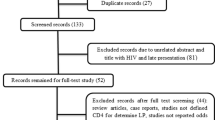Abstract
Objective:To perform a decision analysis to determine the thresholds of safety and effectiveness that would fustify short-term zidovudine (AZT) administration for persons with accidental percutaneous exposure to HIV-positive blood.
Design:Published data were used to estimate the seroconversion rate (0.42%), rate of developing AIDS if HIV-infected (5%/year), and survival with AIDS (50%/year). No information is available on zidovudine effectiveness and little is known about fatal toxicity of zidovudine. Death from AIDS or from zidovudine toxicity was used as the endpoint.
Results:For those with exposure to blood known to be HIV-seropositive, the benefits of zidovudine outweigh the risks if efficacy is above approximately 3% to 8%. Wide variations in the assumptions have little effect on the thresholds.
Conclusions:Since clinical trials to determine zidovudine effectiveness in this setting will probably never be done, decision analysis offers the only quantitative method for addressing this question. Unless future studies show zidovudine to be both ineffective and toxic, the benefits of short-term administration of zidovudine outweigh the risks immediately after exposure to HIV-positive blood. Zidovudine benefits do not clearly outweigh the risks after exposure to blood of unknown serologic status, or if there is a delay in starting therapy.
Similar content being viewed by others
References
Fischl MA, Richman DD, Grieco MH, et al. The efficacy of azidothymidine (AZT) in the treatment of patients with AIDS and AIDS-related complex: a double-blind, placebo-controlled trial. N Engl J Med. 1987;317:185–91.
Tavares L, Roneker C, Johnston K, Lehrman SN, de Noronha F. 3′-azido-3′-deoxythymidine in feline leukemia virus-infected cats: a model for therapy and prophylaxis of AIDS. Cancer Res. 1987;47:3190–4.
Ruprecht RM, O’Brien LG, Rossoni LD, Nusinoff-Lehrman S. Suppression of mouse viraemia and retroviral disease by 3′-azido-3′-deoxythymidine. Nature. 1986;323:467–9.
Booth W. NIH offers AZT to exposed workers. Science. 1989;243:1137.
Beck JR, Pauker SG. The Markov process in medical prognosis. Med Decis Making. 1983;3:419–58.
Marcus R, CDC Cooperative Needlestick Group. Surveillance of health care workers exposed to blood from patients infected with the human immunodeficiency virus. N Engl J Med. 1988;319:1118–23.
Cooper GS, Jeffers DJ. The clinical prognosis of HIV-1 infection: a review of 32 follow-up studies. J Gen Intern Med. 1988;3:525–32.
Rothenberg R, Woelfel M, Stoneburner R, Milberg J, Parker R, Truman B. Survival with the acquired immunodeficiency syndrome: experience with 5,833 cases in New York City. N Engl J Med. 1987;317:1297–302.
National Center for Health Statistics. Vital statistics of the United States, 1985, Vol. II, Mortality, part A. DHHS publication no. (PHS) 88-1101. Public Health Service, Washington, DC: U.S. Government Printing Office, 1988.
Richman DD, Fischl MA, Grieco MH, et al. The toxicity of azidothymidine (AZT) in the treatment of patients with AIDS and AIDS-related complex. A double-blind, placebo-controlled trial. N Engl J Med. 1987;317:192–7.
Gill PS, Rarick M, Brynes RK, Causey D, Loureiro C, Levine AM. Azidothymidine associated with bone marrow failure in the acquired immunodeficiency syndrome (AIDS). Ann Intern Med. 1987;107:502–5.
Bloom DE, Glied S. The evolution of AIDS economic research. Health Policy. 1989;11:187–96.
Henderson DK, Gerberding JL. Prophylactic zidovudine after occupational exposure to the human immunodeficiency virus: an interim analysis. J Infect Dis. 1989;160:321–7.
Author information
Authors and Affiliations
Additional information
Received from the Clinical Trials Unit and the Departments of Medicine, Community Medicine, and Biomathematical Sciences, Mount Sinai School of Medicine of the City University of New York, New York, New York.
Supported in part by grant no. NOI-AI-72627 from the National Institute of Allergy and Infectious Diseases.
Rights and permissions
About this article
Cite this article
Sacks, H.S., Rose, D.N. Zidovudine prophylaxis for needlestick exposure to human immunodeficiency virus. J Gen Intern Med 5, 132–137 (1990). https://doi.org/10.1007/BF02600514
Issue Date:
DOI: https://doi.org/10.1007/BF02600514




